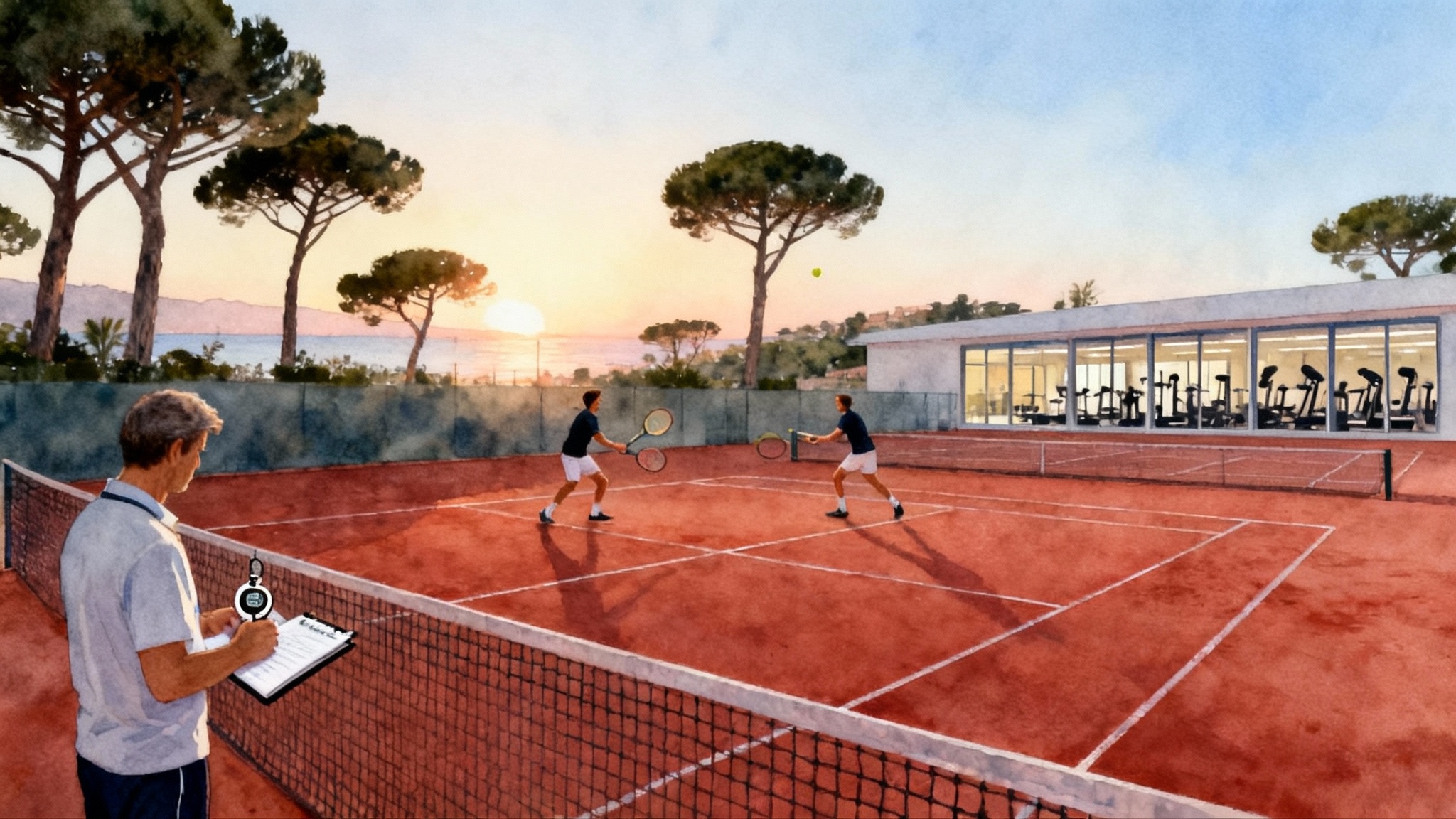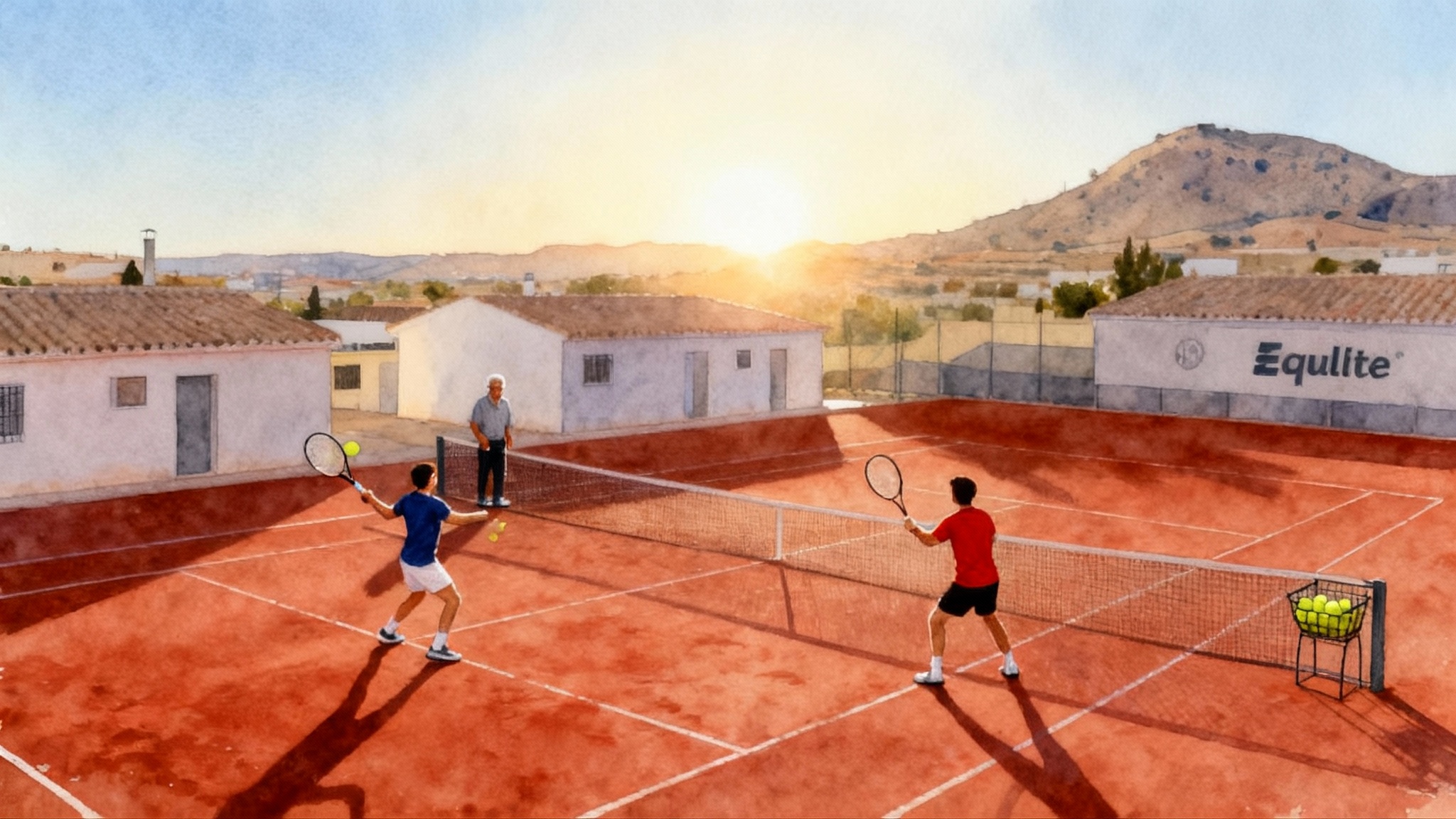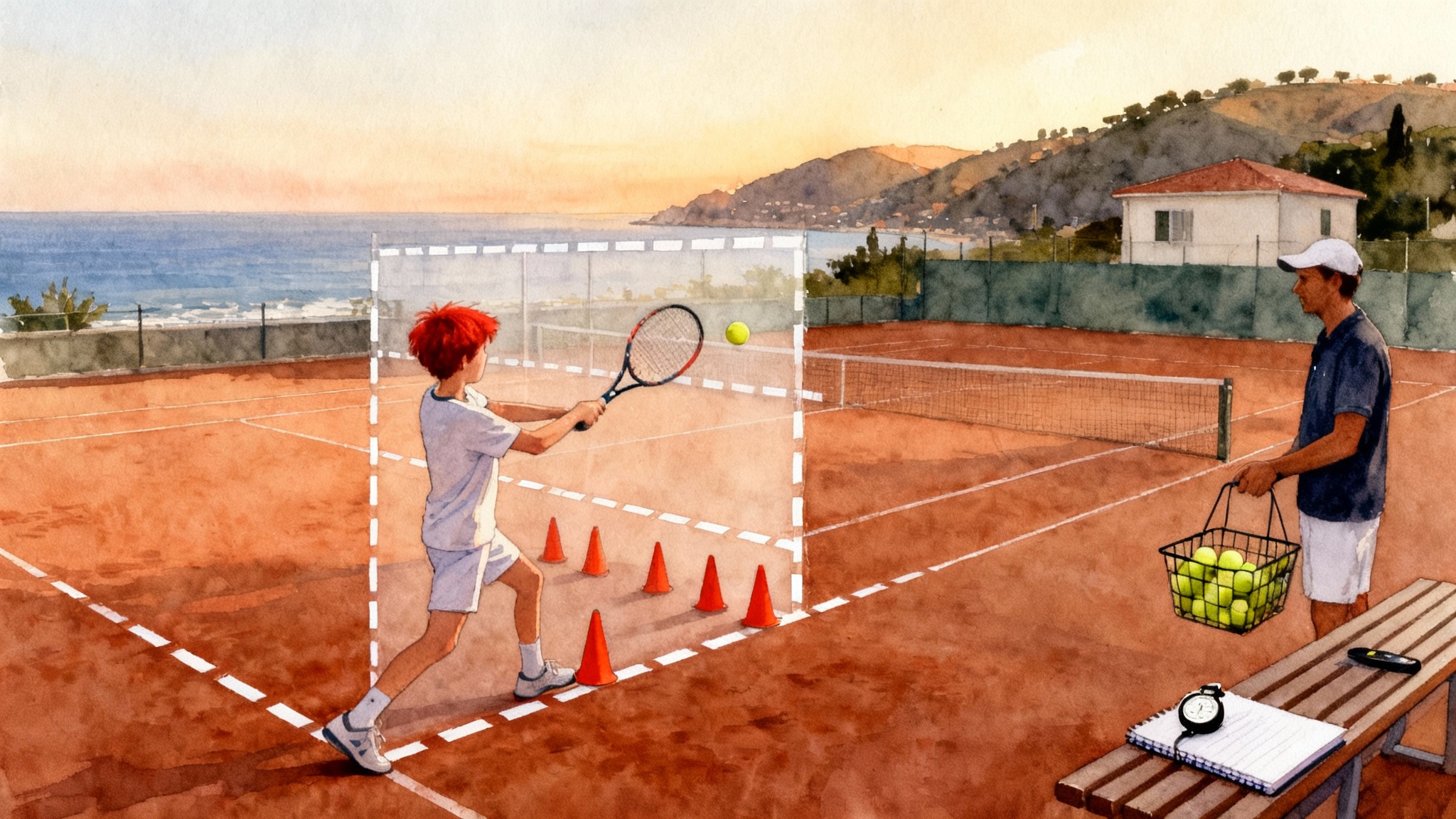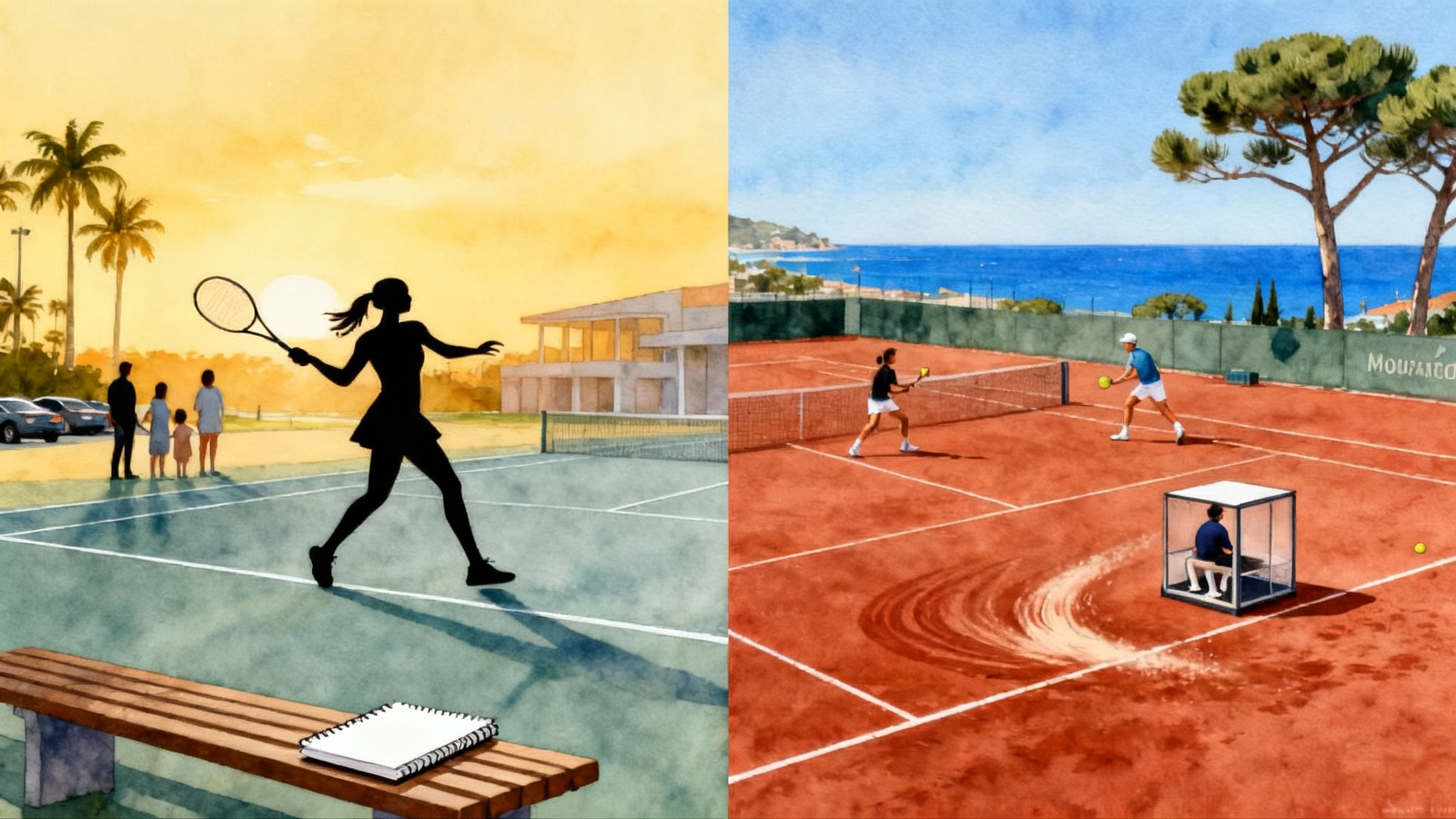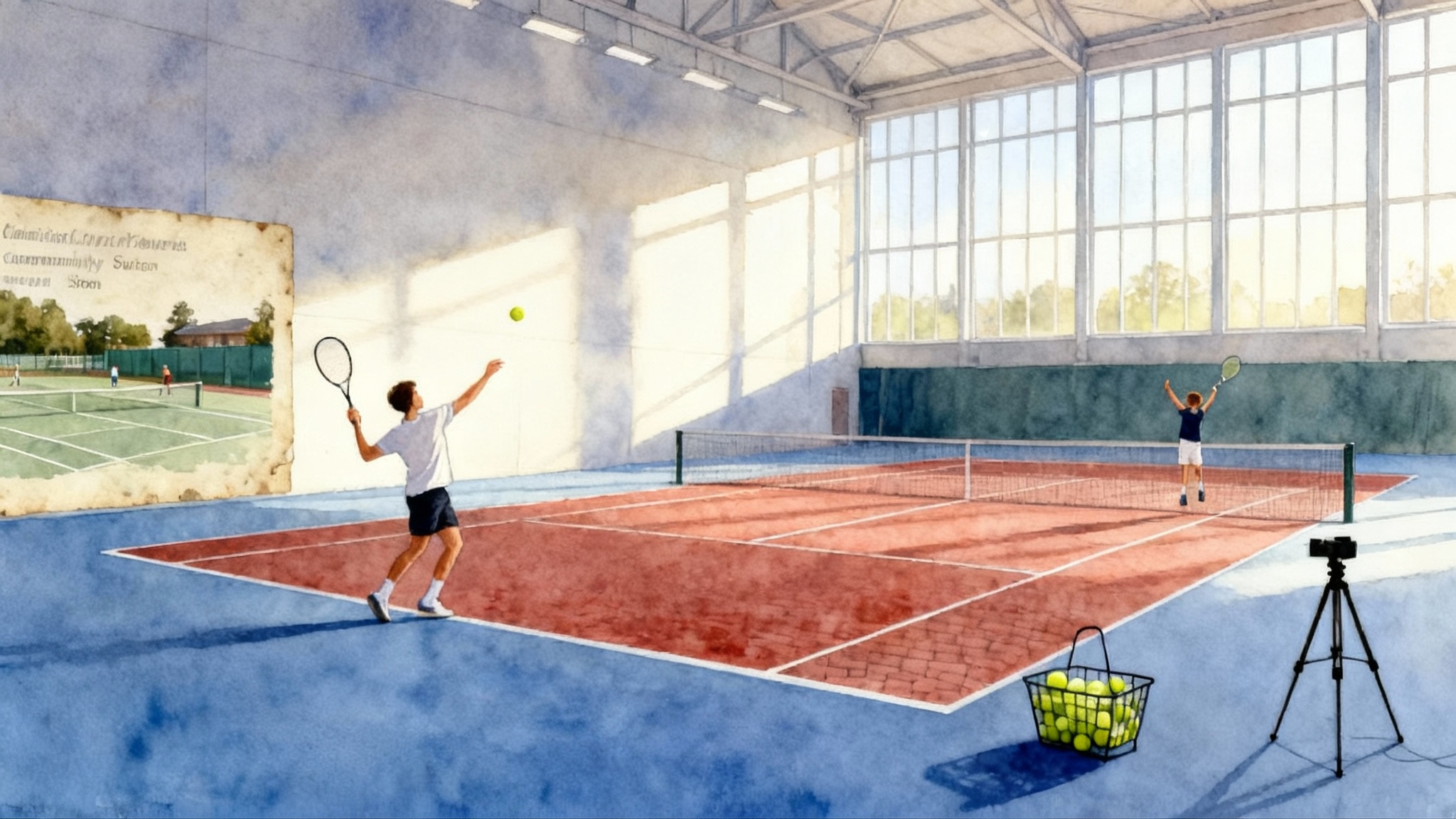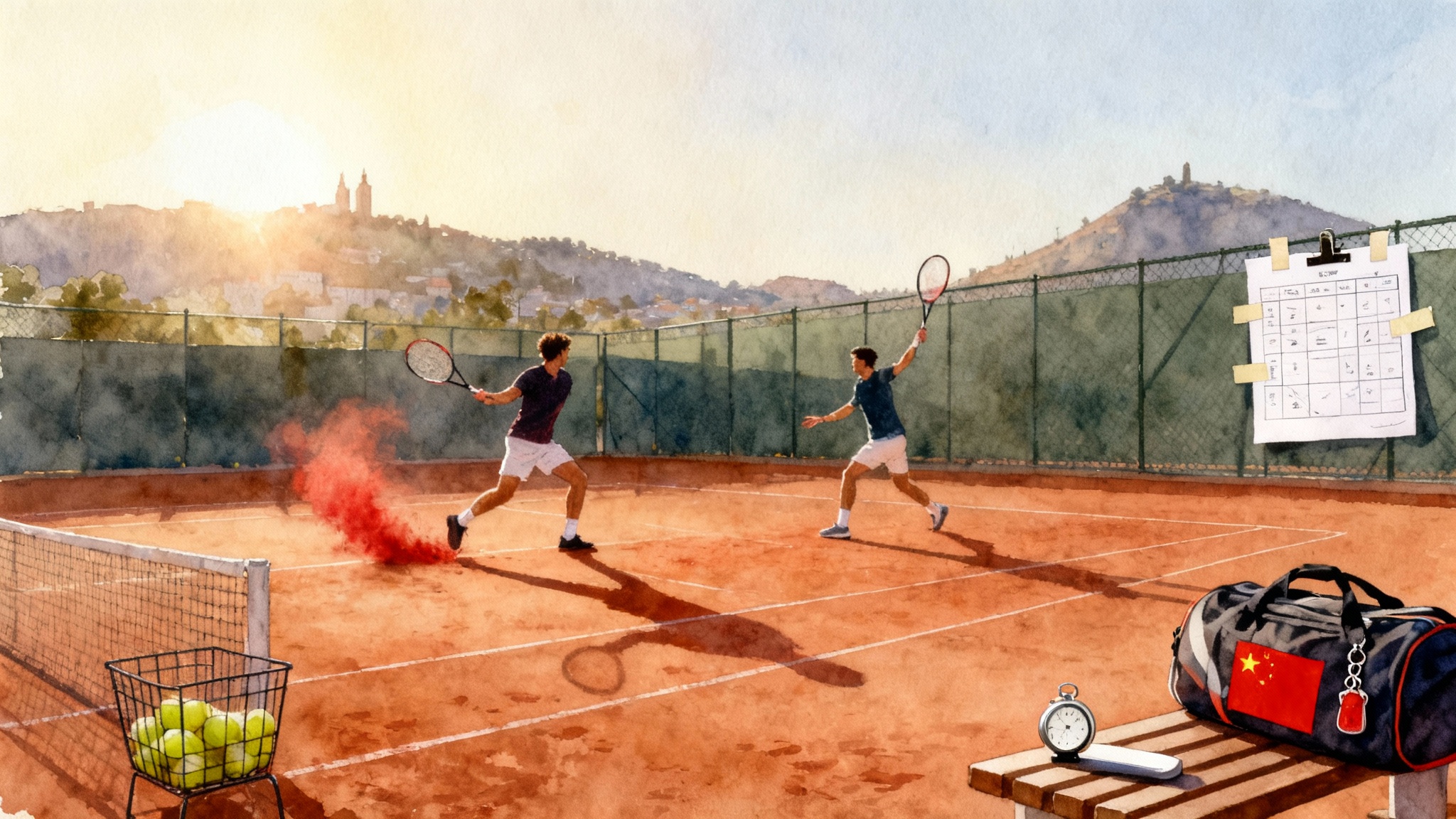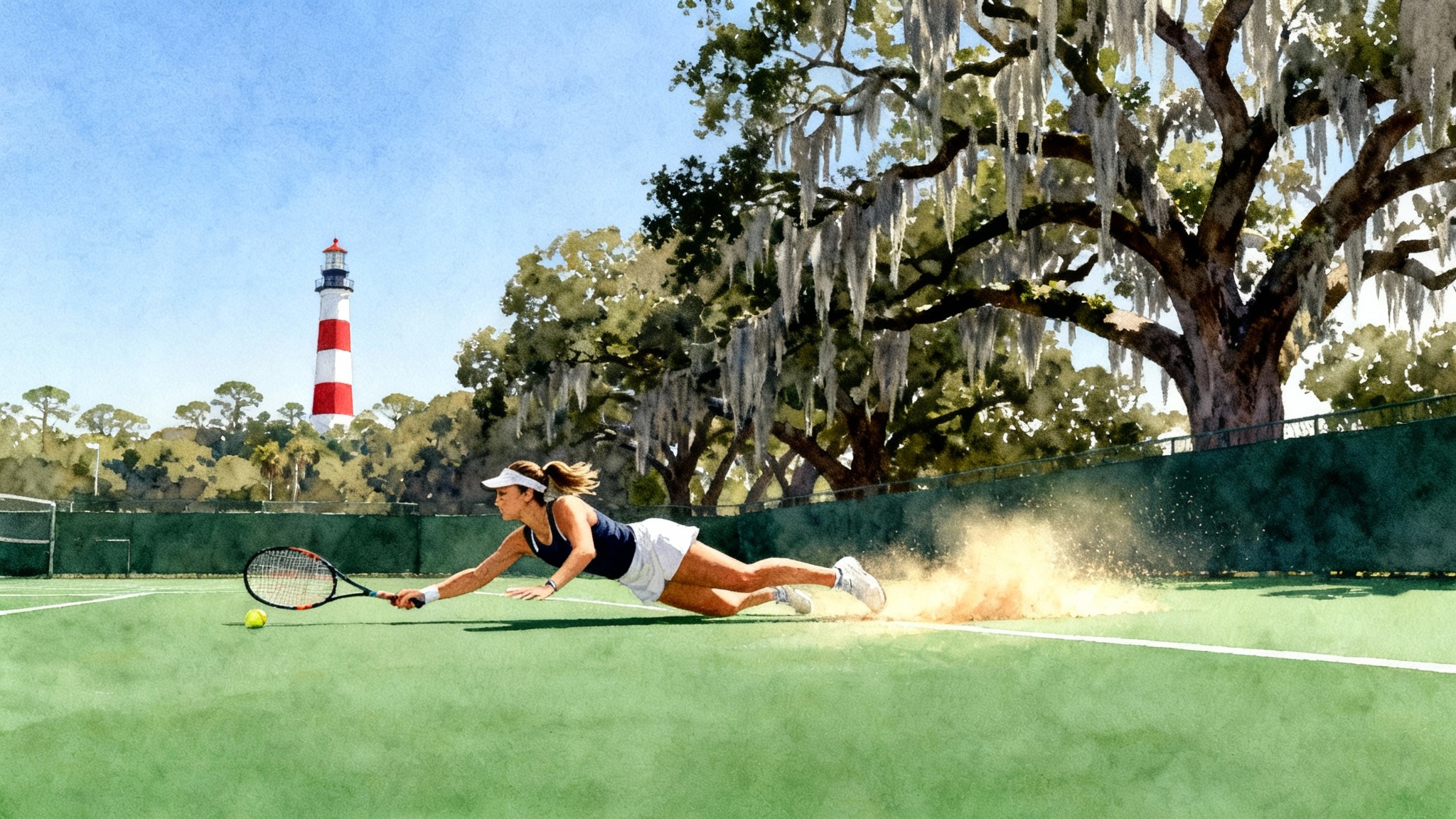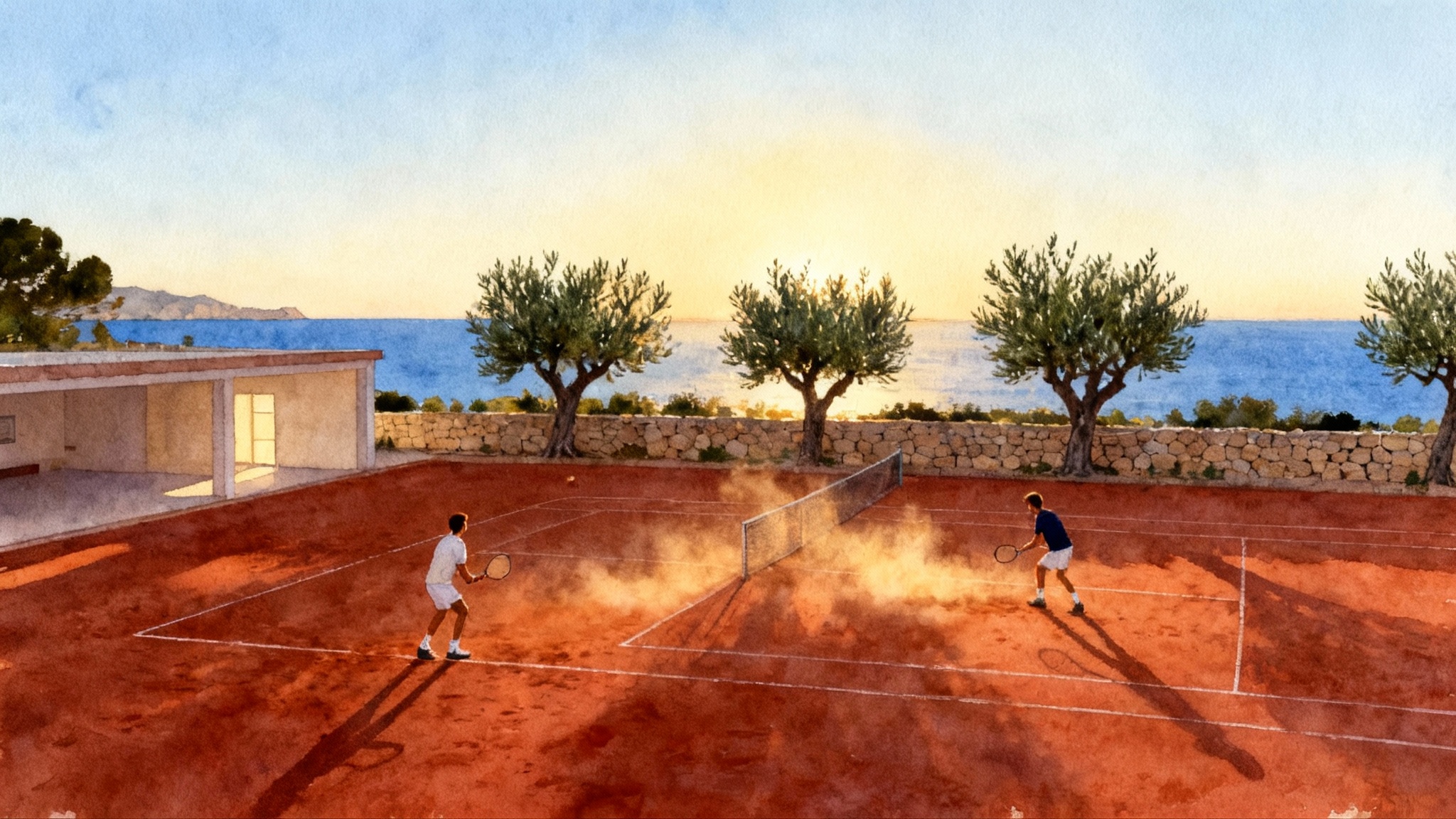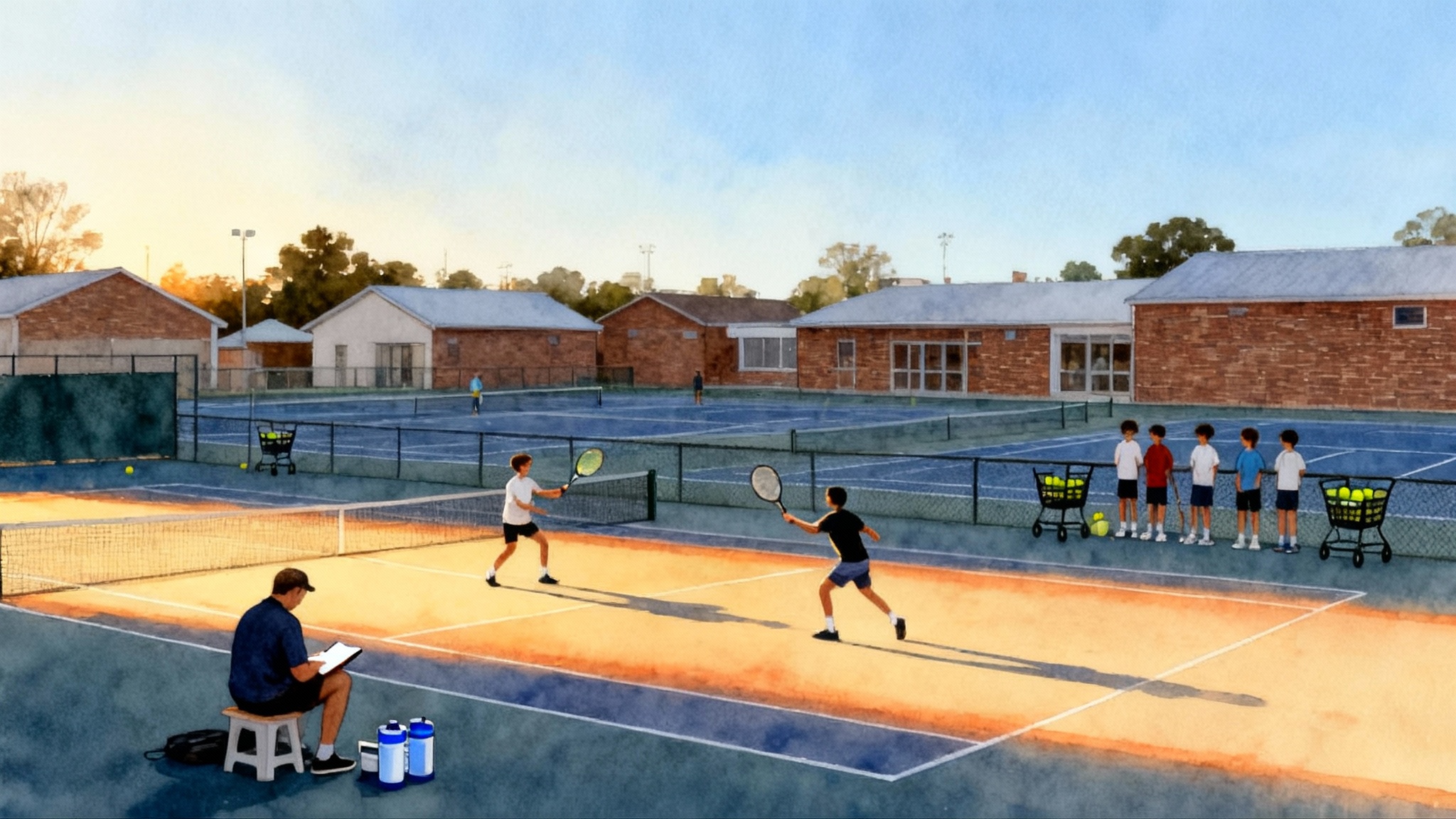From College Park to Arthur Ashe: How JTCC Fueled Tiafoe’s Rise
Frances Tiafoe did not need to move to Europe. The Junior Tennis Champions Center in College Park gave him daily courts, a mentor in Misha Kouznetsov, and a targeted junior calendar that scaled to a top 10 ranking and the 2022 US Open semifinal.
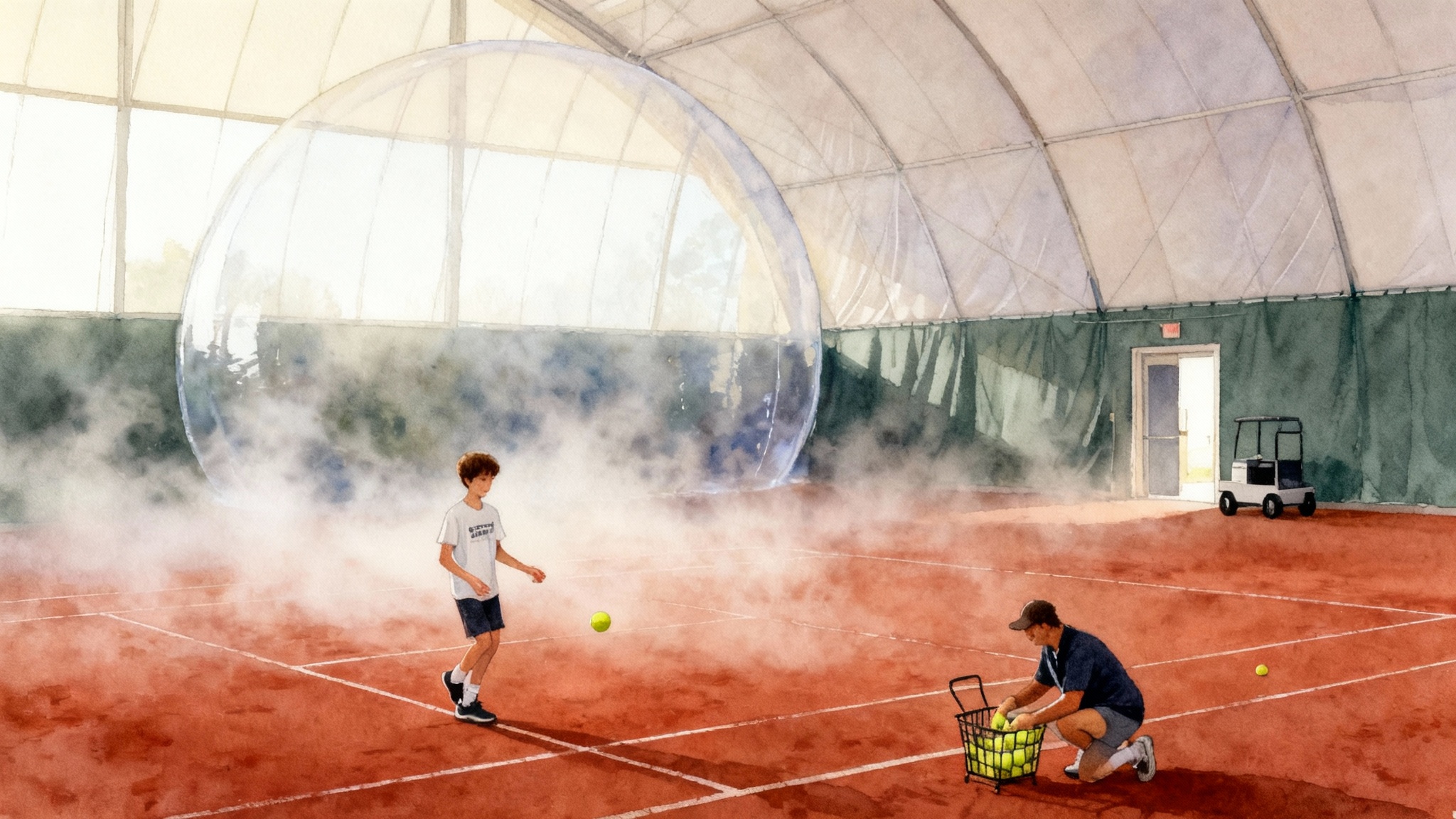
The pathway most families miss is hiding in plain sight
On September 9, 2022, Frances Tiafoe walked onto Arthur Ashe Stadium for a United States Open semifinal, having just defeated Rafael Nadal and Andrey Rublev. That stage felt like another galaxy from College Park, Maryland, where his father worked maintenance at a nonprofit academy and the Tiafoe twins slept in a small room steps from the courts. The bridge between those worlds was not a European relocation or a private island of training. It was access, mentorship, and a clear competition plan anchored at the Junior Tennis Champions Center in College Park.
The details matter, because they are replicable for American families who want a serious pathway without moving abroad. Tiafoe’s father, an immigrant from Sierra Leone, helped build the Junior Tennis Champions Center, later becoming its on-site custodian. That job tied the family to the courts and opened doors to free or heavily subsidized programming. The arrangement, documented in a 2014 Washington Post profile, was not glamorous. It was practical. He lived where he trained, and that proximity compounded over thousands of hours.
What JTCC actually provided
The Junior Tennis Champions Center is a nonprofit with a mission that reads simple on paper and powerful in practice. It is a place that blends public-minded programming with high-performance training. For Tiafoe, it delivered three things that money alone cannot guarantee:
- Daily courts without friction. When you live steps from the courts, one extra 45-minute session a few nights a week turns into dozens of hours a year. Those hours are hidden edges that show up later in fifth sets and tie-breaks.
- A ladder to climb. JTCC’s ecosystem placed a hungry eight-year-old beside older, better players, which created a constant reference point. He could measure himself every week, not once a season.
- A coach who stayed. Continuity is a competitive advantage. Tiafoe’s long run with Misha Kouznetsov gave him a shared language, clear benchmarks, and accountability that survived rough patches and growth spurts.
The coach who turned access into progress
Tiafoe’s relationship with Misha Kouznetsov began when he was eight. Kouznetsov did not just tighten strokes. He became a planner, driver, and mentor, often covering entry fees and travel, then matching praise with standards. Long-term coaching does two critical things for a developing player:
- It reduces decision churn. Instead of changing grips or tactics every few months, the player works through plateaus with one guiding philosophy.
- It creates compounding feedback. The coach who watched your first forehand overhaul will also notice the tiny bad habit that snuck in during a growth spurt, and can fix it before it becomes expensive.
Families often focus on the label of a coach rather than the fit. Kouznetsov was not famous. He was present. Presence beats prestige for players under 16.
A dense junior calendar that built results, not miles
Tiafoe did not climb by choosing the fanciest passports. He climbed by stacking the right events at the right times and earning his way up. Three milestones tell the story of how a deliberate schedule translated into belief and ranking points:
- January 2012: he won Les Petits As in Tarbes, the unofficial world championship for 14-and-under, defeating William Blumberg in an all-American final. See the USTA report on Les Petits As.
- December 2013: he captured the Boys’ 18s Orange Bowl at age 15, the youngest champion in the event’s history at that level, against his American peer group.
- August 2015: he won the USTA Boys’ 18 National Championship in Kalamazoo, earning a United States Open main draw wild card by right.
Note the pattern. Only one key trip required leaving the country before he turned professional. The rest of the proving ground sat in the United States, inside events that American families can plan for on a reasonable budget if they are strategic with travel and entries.
From junior wins to the top 10 and a United States Open semifinal
After turning professional in 2015, Tiafoe’s path still reflected the same elements: proximity, continuity, and a calendar with purpose. Years later, he broke into the top 10 of the Association of Tennis Professionals rankings in June 2023, and the United States Open run in 2022 confirmed that his base was built to withstand the sport’s biggest moments. He did not reinvent himself. He scaled what worked.
What families can copy, step by step
Here is a practical playbook that translates Tiafoe’s College Park pathway into a plan you can use without moving abroad.
1) Start at a nonprofit hub and ask the right questions
Seek a nonprofit or municipal academy within commuting distance. Your goal is daily access, not luxury amenities. When you tour, ask:
- Scholarships and service credit: Is there a work-study, mentorship, or community coaching track that reduces costs for dedicated families? Many nonprofits will exchange volunteer hours for clinic access, stringing support, or court time.
- Competition integration: How does the program help with tournament selection, entries, and travel pooling for key events?
- Practice density: How many organized hitting windows exist per week for your child’s age and level? Can you arrive early and stay late to add contact time?
If your town has multiple options, pick the program that guarantees the most court repetitions with players slightly better than your child. Repetitions and frictionless access will beat a fancier building an hour away.
2) Secure one primary coach and commit to a shared plan
You can add specialists later. First, anchor with a lead coach who will stay. Interview candidates and ask for a 90-day plan. The plan should include:
- Two or three technical priorities with checkpoints you can film monthly.
- A weekly schedule that blends group training with two targeted individual sessions.
- A tournament calendar for the next two months, plus a provisional plan for the next two quarters.
Agree on how feedback will be delivered. A simple format works well: one sentence on what improved, one sentence on what slipped, one sentence on what to do next week. Consistency beats cleverness.
3) Build a competition calendar that escalates by design
Use a stair-step model. The goal is to collect quality matches, not stamps in a passport.
- Ages 10 to 12: focus on local and sectional events sanctioned by the United States Tennis Association and level-appropriate Universal Tennis events. Play three weekends out of four in the spring and fall, fewer in exam windows. Prioritize car-drivable events that offer two matches per day.
- Ages 12 to 14: add a few national stops like Winter Nationals, Easter Bowl, and the Clay and Hard Court Nationals. Budget for one higher-signal event at the end of a training block. If your player is among the top few in the section, consider one international test such as Les Petits As qualifying or a North American International Tennis Federation event to gauge the pace.
- Ages 14 to 16: use runs at Eddie Herr and the Orange Bowl in Florida as end-of-year capstones. Keep academic load visible. The target is 55 to 75 completed matches per year, with two no-competition recovery weeks after heavy blocks.
- Ages 16 to 18: aim for Kalamazoo or San Diego. Enter a few professional qualifying draws only if the junior calendar is yielding late rounds and the coach believes the player is ready to win matches, not just gain exposure.
Write out the calendar for six months, then color code training weeks, travel weeks, and recovery weeks. Review with your coach every eight weeks and adjust based on performance and health, not ego.
4) Make proximity your superpower
Living on top of the courts was Tiafoe’s unfair advantage. You can approximate this without moving. Choose the closest viable training base and deliberately schedule micro-sessions. Ten extra 45-minute hitting windows across a month add roughly seven and a half hours. Over a year that becomes a week’s worth of additional contact time, paid for with logistics rather than cash. For footwork efficiency that multiplies those minutes, see our split-step mastery guide.
Use school nights and off-peak windows. Arrive thirty minutes early to shadow swing, serve baskets, or do footwork ladders. Small windows compound if you plan them.
5) Finance the journey with multiple small levers
Nonprofit academies often have layered support. Ask about:
- Need-based scholarships and partial fee waivers.
- Service exchanges, such as helping with younger clinics, ball crew coordination, or event set-ups.
- Loaner or discounted equipment programs, and stringing credits for tournament travel.
- Local civic grants and school-based athletic boosters with small awards that can cover one or two trips.
Keep a simple budget. Project 12 months of likely entry fees, travel, and stringing, and share it with your coach so the calendar aligns with reality. Many families overspend on distant tournaments and underinvest in deliberate technical blocks at home.
6) Build the right practice ecosystem
Tiafoe learned by chasing older players. Recreate that. Ask your program how they engineer mixed-age hitting blocks. If the pool is thin, collaborate with nearby clubs to host weekly match-play pods. The standard is quality rhythms, not perfect sparring partners. One lefty, one counterpuncher, and one bigger server will stretch patterns that show up in real draws.
7) Keep school and recovery visible
The leap from local wins to national relevance usually fails on recovery and time management, not forehands. Write down a travel policy: maximum number of school days missed per month, recovery days required after red-eye flights, and screens off by a certain time in tournament weeks. Recovery that is written gets respected.
Why this works without a change of country
Look closely at Tiafoe’s stepping stones. Les Petits As was the only essential European detour before turning professional. His other anchors were American: Orange Bowl and Eddie Herr in Florida, Kalamazoo in Michigan, and repeated runs at United States Tennis Association national events. The lesson is not that Europe is unnecessary for everyone. It is that the calendar should serve development rather than identity. For a contrasting blueprint that also works, see Coco Gauff’s hybrid path.
How to spot a program like JTCC near you
- Nonprofit status and a mission that explicitly mentions access for underserved families.
- A documented community pipeline that brings beginners into the high-performance track when they show commitment.
- Coaches with a pathway, who can describe how your child will move through levels, with example timelines and data from past players.
- A culture of service. When older juniors help run clinics for younger kids, you are in the right place.
You can use our directory to find programs that match these traits and contact them directly through their pages on TennisAcademy.app. If you already train at a club, ask leaders which nearby nonprofit they partner with for outreach or scholarships, then follow those threads.
A note on goals and timing
Tiafoe’s timeline shows that big junior wins did not happen in year one. He was already stacking local repetitions and chasing older players at eight. His first major international junior breakthrough came at 14, then he added national titles at 15 and 17. The important mechanic is not the exact age. It is the sequence: local density, regional tests, national events, one or two international measures, then a return to the lab with specific work.
Quick checklist for parents
- Do we have a primary coach who will commit for at least one full season and meet weekly on the plan?
- Does our six-month calendar prioritize car-drivable events and two peak targets rather than constant travel?
- Are we getting at least two extra micro-sessions per week through smarter logistics?
- Did we apply for every scholarship, service exchange, and small grant available within 25 miles?
- Are we filming the same three checkpoints monthly and measuring actual changes?
Tools to help you execute
- Build and share a six-month calendar using our free Junior Competition Planner on TennisAcademy.app. Color code training, competition, and recovery, then export a version for school.
- Use our Academies finder to filter for nonprofit status, scholarship availability, and average group sizes. Contact programs directly from the listing to ask the scholarship and practice-density questions above.
The real lesson of College Park
Frances Tiafoe’s story is not a lottery ticket. It is a lesson in compounding. A father’s job placed his sons near a great environment. A nonprofit academy made good on its mission and folded a committed kid into higher rungs. A coach decided to stay, and a calendar focused on events that mattered. Multiply those choices by days and years, and the outcome is a young man grinning under the lights on Arthur Ashe with a packed stadium on its feet.
Families across the United States can build their own version of that bridge. Start with access that you can repeat, commit to one coach who will be there next month, and let your calendar do the heavy lifting. If you do those three things, you will not need a different continent to find world-class improvement. You will build it, one reliable court session at a time.
